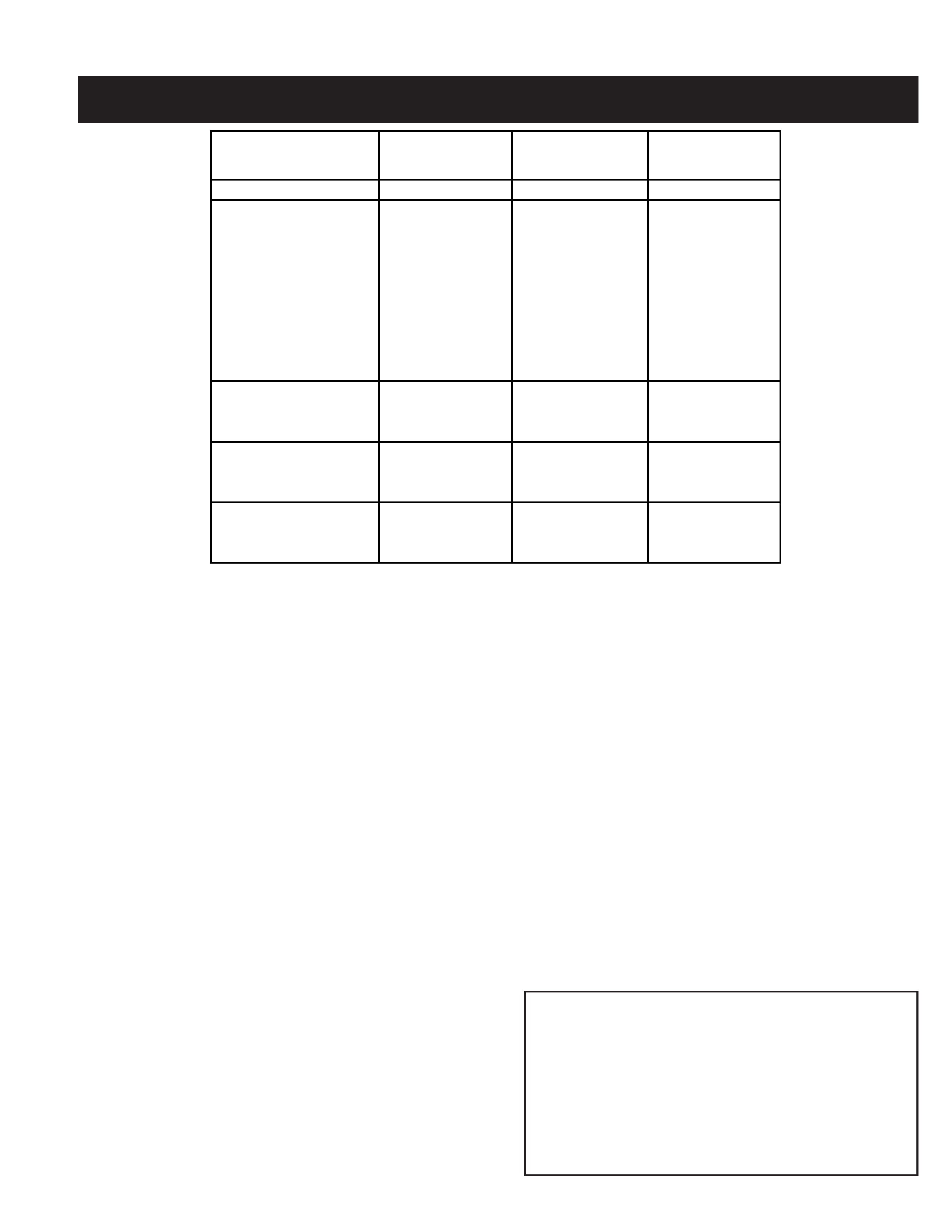
TRINITRON® COLOR TELEVISION
SERVICE MANUAL
AA-2U CHASSIS
MODEL NAME
REMOTE COMMANDER
DESTINATION
CHASSIS NO.
KV-32FV27
RM-Y182
US
SCC-S44KA
KV-32FV27
RM-Y182
CND
SCC-S45GA
KV-36FS13
RM-Y180
US
SCC-S44HA
KV-36FS13
RM-Y180
CND
SCC-S45EA
KV-36FS13H
RM-Y180
HAWAII
SCC-S46FA
KV-36FS17
RM-Y181
US
SCC-S44GA
KV-36FS17H
RM-Y181
HAWAII
SCC-S46EA
KV-36FV27
RM-Y182
US
SCC-S44JA
KV-36FV27
RM-Y182
CND
SCC-S45FA
KV-36FV27H
RM-Y182
HAWAII
SCC-S46GA
SelfDiagnosis
Supported model
RM-Y182
9-965-901-01
KV-36FV27

-- 2 --
KV-32FV27 / 36FS13 / 36FS17 / 36FV27
TABLE OF CONTENTS
Specifications.......................................................................................................................................3
Warnings and Cautions........................................................................................................................4
Safety Check-Out.................................................................................................................................5
Self-Diagnostic Function......................................................................................................................6
1. Disassembly
1-1. Rear Cover Removal.....................................................................................................................8
1-2. Chassis Assembly Removal..........................................................................................................8
1-3. Service Position ............................................................................................................................8
1-4. Picture Tube Removal ...................................................................................................................9
Anode Cap Removal Procedure...................................................................................................9
2. Set-Up Adjustments
2-1. Beam Landing...............................................................................................................................10
2-2. Convergence.................................................................................................................................11
2-3. Focus ............................................................................................................................................13
2-4. Screen (G2) ..................................................................................................................................13
2-5. White Balance Adjustments ..........................................................................................................13
3. Safety Related Adjustments
3-1. X R530, R531 Confirmation Method (Hold-Down Confirmation) and Readjustments ................14
3-2. B+ Voltage Confirmation and Adjustment .....................................................................................14
4. Circuit Adjustments
4-1. Setting the Service Adjustment Mode...........................................................................................15
4-2. Memory Write Confirmation Method .............................................................................................15
4-3. Remote Adjustment Buttons and Indicators .................................................................................15
4-4. Adjustment Items ..........................................................................................................................16
4-5. Feature ID Map .............................................................................................................................21
4-6. Program Palette Settings ..............................................................................................................21
4-7. A Board Adjustments ....................................................................................................................22
5. Diagrams
5-1. Circuit Boards Location.................................................................................................................25
5-2. Printed Wiring Boards and Schematic Diagrams Information.......................................................25
5-3. Block Diagram...............................................................................................................................26
A Board ........................................................................................................................................32
AK Board ......................................................................................................................................37
C Board ........................................................................................................................................41
G Board ........................................................................................................................................43
HA Board......................................................................................................................................45
HB Board......................................................................................................................................46
HS Board......................................................................................................................................47
HX Board......................................................................................................................................48
T Board.........................................................................................................................................49
UX Board......................................................................................................................................50
UY Board......................................................................................................................................56
WA Board .....................................................................................................................................63
5-4. Semiconductors ............................................................................................................................65
6. Exploded Views
6-1. Chassis (KV-36FS13/36FS17 ONLY) ...........................................................................................66
6-2. Chassis (KV-32FV27/36FV27 ONLY) ...........................................................................................67
6-3. Picture Tube Removal ...................................................................................................................68
7. Electrical Parts List ......................................................................................................................................69
SECTION TITLE
PAGE

-- 3 --
KV-32FV27 / 36FS13 / 36FS17 / 36FV27
Television system
American TV standard, NTSC
Channel coverage
VHF: 2-13/ UHF: 14-69/ CATV: 1-125
Picture tube
Flat Trinitron
®
tube
Visible screen size
32 inch picture measured diagonally (KV 32FV27 ONLY)
36 inch picture measured diagonally (All EXCEPT KV-32FV27)
Actual screen size
34-inch measured diagonally (KV 32FV27 ONLY)
38-inch measured diagonally (All EXCEPT KV-32FV27)
Antenna
75 ohm external terminal for VHF/UHF
Supplied Accessories
RM-Y180 (KV-36FS13 ONLY)
RM-Y181 (KV-36FS17 ONLY)
RM-Y182 (KV-32FV27 / 36FV27 ONLY)
Battery size AA (R6) (2)
Wireless Stereo Headphones MDR-1F0230//K Set (KV-32FV27/ 36FV27 ONLY)
Battery size AA (R6) for Headphones (KV-32FV27/ 36FV27 ONLY)
Optional Assessories
AV Cable: VMC-810/820/830 HG
Audio Cable: RKC-515HG
Component Video Cable: VMC-10/30 HG
TV Stand: SU-36FD4 (ALL EXCEPT KV-32FV27)
TV Stand: SU 32FD4 (KV-32FV27 ONLY)
SPECIFICATIONS
(
·)SRS(SOUNDRETRIEVALSYSTEM)
(KV-32FV27/ 36FV27 ONLY)
The (
·)SRS(SOUNDRETRIEVALSYSTEM)ismanufacturedby
Sony Corporation under license from SRS Labs, Inc. It is covered by U.S.
Patent No. 4,748,669. Other U.S. and foreign patents pending.
The word `SRS' and the SRS symbol (
·)areregisteredtrademarks
of SRS Labs, Inc. BBE and BBE symbol are trademarks of BBE Sound,
Inc. and are licensed by BBE Sound, Inc. under U.S. Patent No. 4,638,258
Design and specifications are subject to change without notice.
1) 1 Vp-p 75 ohms unbalanced, sync negative
2) Y: 1 Vp-p 75 ohms unbalanced, sync negative
C: 0.286 Vp-p (Burst signal), 75 ohms
3) Y: 1.0 Vp-p, 75 ohms, sync negative; PB: 0.7 Vp-p, 75 ohms
PR: Vp-p, 75 ohms
4) 500 mVrms (100% modulation), Impedance: 47 kilohms
5) More than 408 mVrms at the maximum volume setting (variable)
More than 408 mVrms (fix); Impedance (output): 2 kilohms
KV-36FS13
KV-36FS17
KV-36FV27
KV-32FV27
Power requirements
120V, 60Hz
120V, 60Hz
120V, 60Hz
Number of Inputs/Outputs
Video
1)
33
3
S Video
2)
12
2
Y, PB, PR
3)
11
1
Audio
4)
44
4
Audio Out
5)
11
1
Monitor Out
-1
1
Control-S (IN/OUT)
-1
1
Speaker output (W)
10W x 2
15W x 2
15W x 2
Power Consumption (W)
In use (Max)
200W
210W
210W
In Standby
2W
2W
2W
Dimensions(W/H/D)
mm
910 x 791 x 650
975 x 747 x 633
882 x 687 x 592
in
35
7/8 x 31 1/
8 x 25
5/
8
38
3/
8 x 29
3/
4 x 24
7/
8
34
3/
4 x 27 x 23
1/
4
Mass
kg
100 kg
107 kg
80 kg
lbs
220 lbs.
236 lbs.
176 lbs.

-- 4 --
KV-32FV27 / 36FS13 / 36FS17 / 36FV27
WARNINGS AND CAUTIONS
CAUTION
Short circuit the anode of the picture tube and the anode cap to the metal chassis, CRT shield, or carbon painted on the CRT,
after removing the anode.
WARNING!!
An isolation transformer should be used during any service to avoid possible shock hazard, because of live chassis. The chassis of
this receiver is directly connected to the ac power line.
! SAFETY-RELATED COMPONENT WARNING!!
Components identified by shading and ! mark on the schematic diagrams, exploded views, and in the parts list are critical for
safe operation. Replace these components with Sony parts whose part numbers appear as shown in this manual or in supplements
published by Sony. Circuit adjustments that are critical for safe operation are identified in this manual. Follow these procedures
whenever critical components are replaced or improper operation is suspected.
ATTENTION!!
Apres avoir deconnecte le cap de l'anode, court-circuiter l'anode du tube cathodique et celui de l'anode du cap au chassis metallique
de l'appareil, ou la couche de carbone peinte sur le tube cathodique ou au blindage du tube cathodique.
Afin d'eviter tout risque d'electrocution provenant d'un chássis sous tension, un transformateur d'isolement doit etre utilisé lors de tout
dépannage. Le chássis de ce récepteur est directement raccordé à l'alimentation du secteur.
! ATTENTION AUX COMPOSANTS RELATIFS A LA SECURITE!!
Les composants identifies par une trame et par d'une importance marque ! sur les schemas de principe, les vues explosees et les
listes de pieces sont d'uneimportance critique pour la securite du fonctionnement. Ne les remplacer que par des composants sony
dont le numero de piece est indique dans le present manuel ou dans des supplements publies par sony. Les reglages de circuit dont
l'importance est critique pour la securite du fonctionnement sont identifies dans le present manuel. Suivre ces procedures lors de
chaque remplacement de composants critiques, ou lorsqu'un mauvais fonctionnement suspecte.

-- 5 --
KV-32FV27 / 36FS13 / 36FS17 / 36FV27
SAFETY CHECK-OUT
After correcting the original service problem, perform the following
safety checks before releasing the set to the customer:
1. Check the area of your repair for unsoldered or poorly soldered
connections. Check the entire board surface for solder splashes and
bridges.
2. Check the interboard wiring to ensure that no wires are "pinched" or
touching high-wattage resistors.
3. Check that all control knobs, shields, covers, ground straps, and
mounting hardware have been replaced. Be absolutely certain that
you have replaced all the insulators.
4. Look for unauthorized replacement parts, particularly transistors,
that were installed during a previous repair. Point them out to the
customer and recommend their replacement.
5. Look for parts which, though functioning, show obvious signs of
deterioration. Point them out to the customer and recommend their
replacement.
6. Check the line cords for cracks and abrasion. Recommend the
replacement of any such line cord to the customer.
7. Check the B+ and HV to see if they are specified values. Make sure
your instruments are accurate; be suspicious of your HV meter if sets
always have low HV.
8. Check the antenna terminals, metal trim, "metallized" knobs, screws,
and all other exposed metal parts for AC leakage. Check leakage
as described below.
Leakage Test
The AC leakage from any exposed metal part to earth ground and from
all exposed metal parts to any exposed metal part having a return to
chassis, must not exceed 0.5 mA (500 microamperes). Leakage current
can be measured by any one of three methods.
1. A commercial leakage tester, such as the Simpson 229 or
RCA WT-540A. Follow the manufacturers' instructions to use these
instructions.
2. A battery-operated AC milliammeter. The Data Precision 245 digital
multimeter is suitable for this job.
3. Measuring the voltage drop across a resistor by means of a VOM
or battery-operated AC voltmeter. The "limit" indication is 0.75 V,
so analog meters must have an accurate low voltage scale. The
Simpson's 250 and Sanwa SH-63TRD are examples of passive
VOMs that are suitable. Nearly all battery-operated digital multimeters
that have a 2 VAC range are suitable (see Figure A).
How to Find a Good Earth Ground
A cold-water pipe is a guaranteed earth ground; the cover-plate retaining
screw on most AC outlet boxes is also at earth ground. If the retaining
screw is to be used as your earth ground, verify that it is at ground
by measuring the resistance between it and a cold-water pipe with an
ohmmeter. The reading should be zero ohms.
If a cold-water pipe is not accessible, connect a 60- to 100-watt trouble-
light (not a neon lamp) between the hot side of the receptacle and the
retaining screw. Try both slots, if necessary, to locate the hot side on the
line; the lamp should light at normal brilliance if the screw is at ground
potential (see Figure B).
Figure A. Using an AC voltmeter to check AC leakage.
Figure B. Checking for earth ground.
